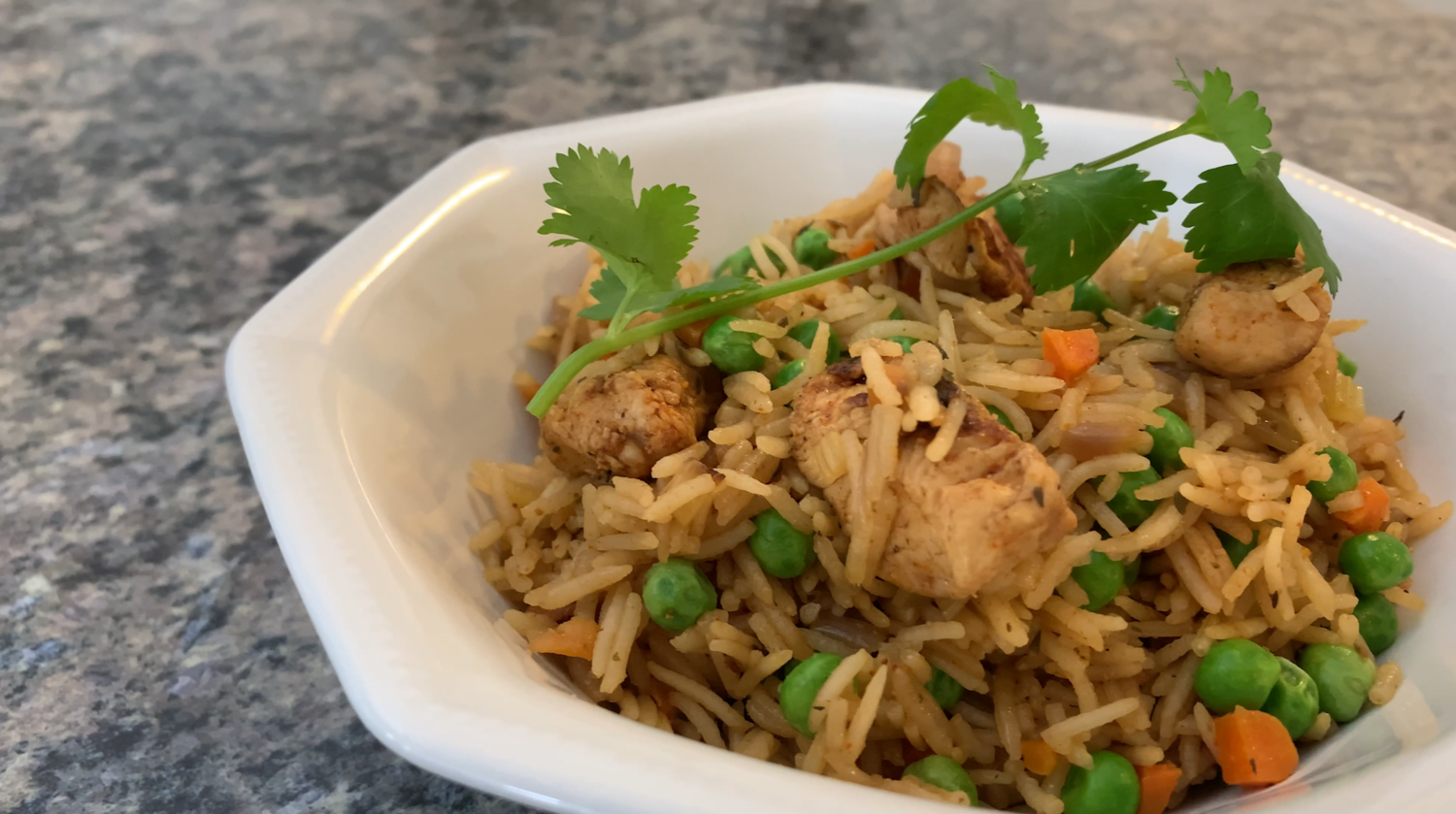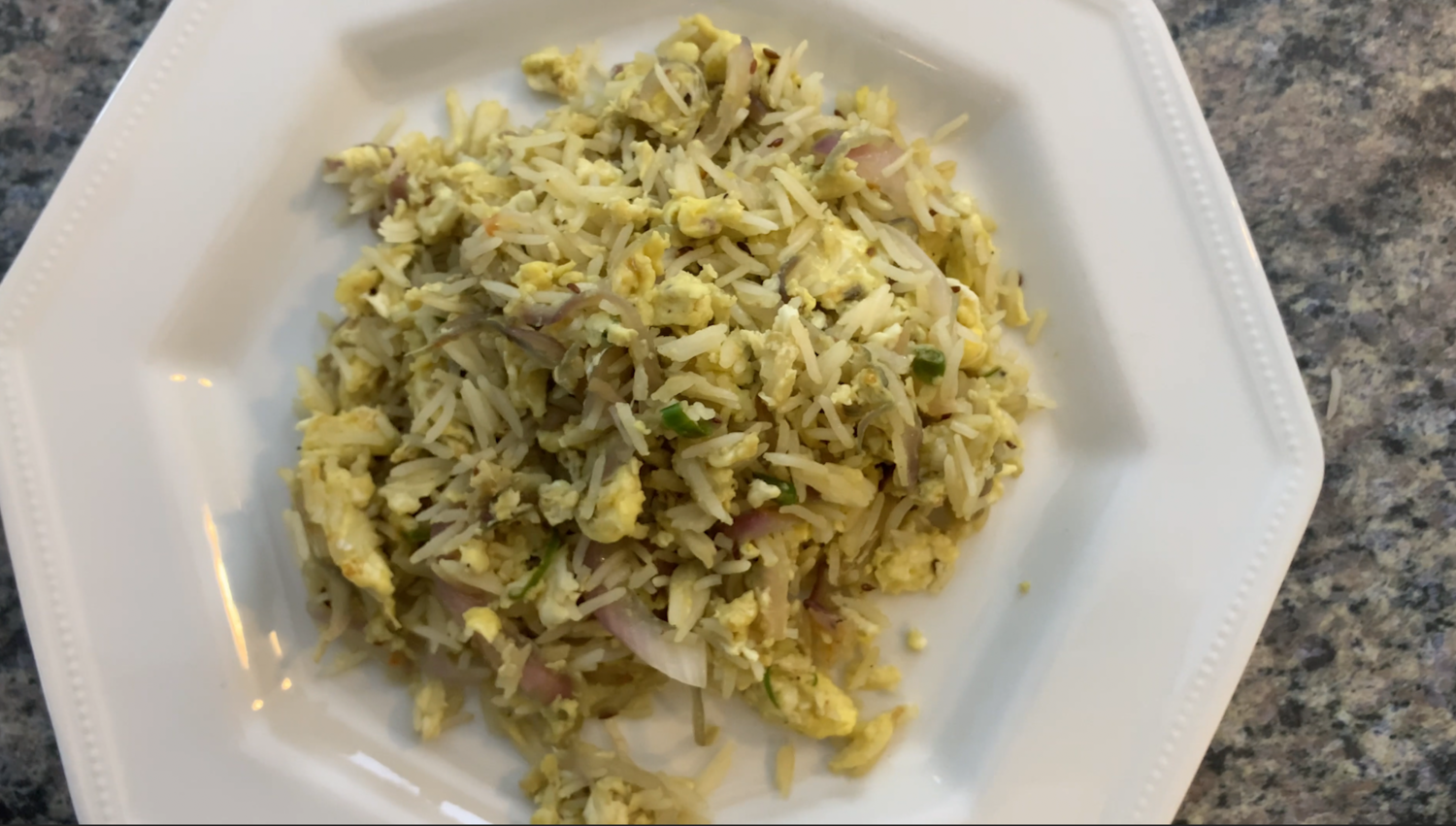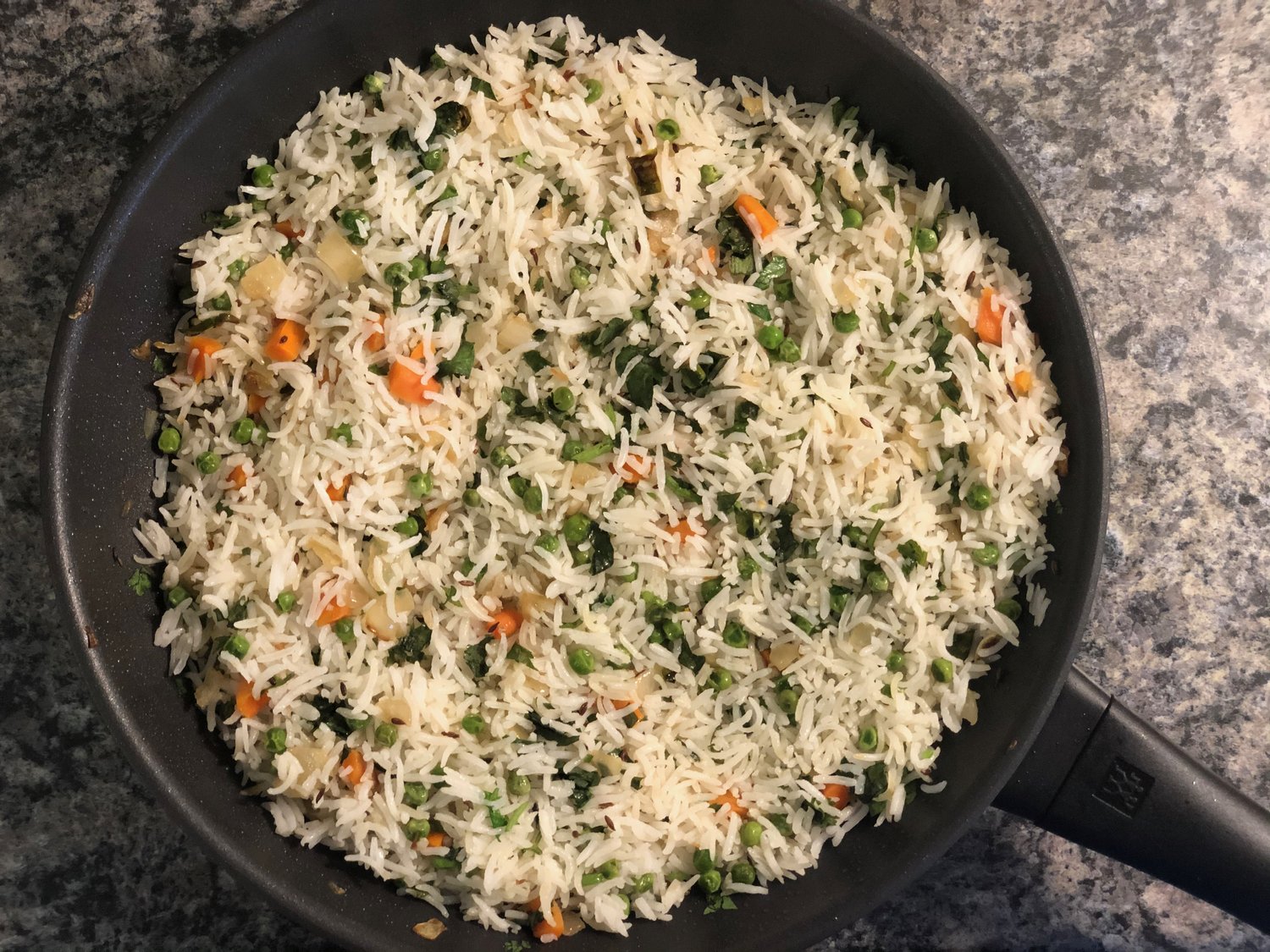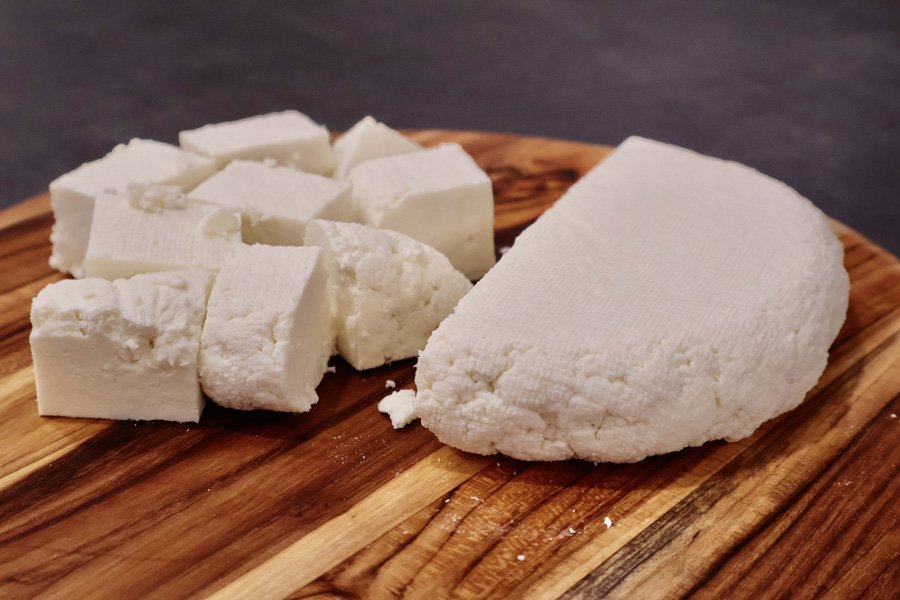How To Cook the Perfect White Rice - Boiled or Steamed
This post may contain affiliate links. Read our disclosure policy
Is your rice sticky, hard, or mush? Rice seems like such a simple side dish, and it’s almost mandatory to have on the side for so many recipes! Yet we can have such a hard time with it! This guide on how to cook white rice will show you how to achieve the perfect Fluffy Basmati Rice - or any white rice! - every single time!
Hello dear reader! You’ve come here because you’ve been eager for dinner, and you want to know how to cook white rice to complete the meal. Rice is a grain that we probably couldn’t live without, and I’m excited to share this guide on how to cook white rice today.
Rice is cheap, simple to grow, nutritious, and easy to prepare. It’s a staple food in diets across the world. You may think that rice on its own is not very exciting, but I’m here to tell you that that’s simply not true. If you haven’t been excited for rice, then you haven’t been doing it right!
Let me tell you that every single time I get my rice perfect, I absolutely jump for joy! When the rice is fluffy and every single grain of rice is distinguishable, that’s such a win in my books!
Unfortunately, despite rice being such a basic commodity, it’s oddly easy to mess up! You could add too much water, boil the rice for too long, boil the rice for not long enough, use too much heat… You either have rice that could be still solid, rice that’s stuck to the pot and burnt, or rice that you manage to get out but it’s sticky and mushy, impossible to separate.
Yikes! That doesn’t sound appetizing to me! When I’ve ruined my rice I’ve been so disappointed! The thing is, these are mistakes that you can easily avoid making. Cooking great rice simply takes practice and the correct technique.
That’s what I plan on doing by sharing this guide on how to cook white rice! By the end of this post, you’ll have the tips and tricks you need on how to cook white rice perfectly very single time! No more mushy rice where half of it is stuck to the pot! With this complete guide on how to cook white rice, going to be able to take all the rice out of your pan, feel every grain, and have delicious rice for your curries, as a side for a protein-packed dinner, or to use to make a dish in itself!
What’s the Best Rice to Use?
Everything starts with the type of rice you’re using. Rice grains range from long-grain, medium-grain, and short-grain.
Long-grain: Examples of long-grain rice include American brown and white rices, Thai jasmine rice, and Indian Basmati rice. Most of the time I’ll be using Basmati rice in my recipes. What can I say, that’s the rice I was raised on! Long-grain rice varieties are very versatile, as the grains have a firm, dry texture. This is your every day rice and best used for side dishes, pilafs, to serve with curries, and to use in salads.
Medium-grain: This includes Japanese-style rice that’s used for sushi and to serve plain with a meal as well as Calrose and valencia bomba rice, used to make Spanish classic paella. Rice of this grain type will absorb double the amount of water as long-grain rice but won’t become sticky.
Short-grain: This type of rice is known for producing a sticky starch. Examples of short grain rice includes Arborio, Japanese sticky rice that’s used for sweets called “mochi”, and short-grain brown rice. Arborio rice in particular is great for risottos because of the extra starch, which will make the dish creamy.
There are also specialty rices such as Chinese black rice and wild rice. I don’t have any experience with these rice varieties, so I can’t give too much information, but if you’re interested then be sure to read more from the source linked below!
Source: Fine Cooking
This recipe will be primarily geared toward basmati rice, as most of my recipes incorporate basmati rice, as I’ve already mentioned. However, this advice can apply to other types of white rice.
Ingredients for Perfect White Rice
Well, this is easy! All you need are two ingredients for great white rice:
Rice of choice
Water
You can definitely season your rice and add butter or oil to flavour the rice, but this recipe will just focus on cooking the rice itself.
How to Cook the Best White Rice
Rinse Rice
A rice like basmati is not as full of starch as other varieties, like calrose. How do I know that? Well, when you rinse the rice, which is basically washing it in cold running water, the water does not turn as cloudy. The downside of not rinsing the rice before cooking is that the starch will make the rice extremely sticky.
For good measure, I rinse my basmati rice 2-3 times before cooking. Its good practice.
You can also let the rice soak in the water for 30 minutes before cooking, but I never really have the patience for that.
Rice to Water Ratio
Long grain rice: 1 cup rice to 2 cups water
Medium grain rice: 1 cup rice to 1 1/3 cup water
Short grain rice: 1 cup rice to 1 1/4 cup water
Cooking the rice - Steamed Method
Once the rice has been rinsed, add it to a saucepan or pot and pour in the appropriate amount of water. Then, turn the heat to high and let the water come to a boil. Then reduce the heat to low, cover the pot leaving a small slit open for steam to escape, and let the rice cook for 15-20 minutes.
Remember, the more rice you are cooking, the longer it will take. Same goes the other way. Over time, your nose will develop senses that will tell you that the rice is cooked. Once done cooking, take a bit of the rice. It should be soft, and still hold its shape. At this point, take the pot off the heat, keep it covered and let it sit for about 10 minutes. This will help ensure the rice is not sticky from the excess steam and make the rice fluffy.
Before serving, fluff up the rice with a fork.
Cooking the rice - Boiled Method
Rinse the rice in cold water in a strainer or in a pot 3-4 times or until the water runs clear.
Add the rice to a pot with 3 times the amount of water. Turn heat to high and bring water up to a boil. Lower the heat just enough so that the water continues to simmer. Cook the rice until it is tender.
Transfer the rice to a strainer and drain any excess water. Return the rice to the pot it was cooked in and cover, let it sit for a few minutes.
Storing and reheating rice
I usually keep rice in a Tupperware container, if stored just by it self it will have a tendency to dry out a little bit. Which is great if you are looking to reuse it in a stir-fry or pulao. If you have left over curry/sauce as well, that should keep the rice hydrated.
The refrigerator life would be between 3-4 days, plus it cooks so quick why not plan better and have it fresh!
To reheat, you can microwave it for 45 seconds to a minute, or convert it into the most yummy pulao. Check out some of my favourite recipes here:
WATCH HOW TO Cook the Perfect Basmati Rice HERE:
Let me know what you think of this recipe in the comments! If you’ve tried this recipe, be sure to post it on social media and tag it with #cookingwithanadi and mention me @cooking.with.anadi. Thank you!

How To Cook the Perfect White Rice - Boiled or Steamed
Ingredients
- 1 Cup rice
- 2 Cups water
- 1 Cup rice
- 1 1/3 Cups water
- 1 Cup rice
- 1 1/4 Cups water
Instructions
- Rinse the rice in cold water in a strainer or in a pot 3-4 times or until the water runs clear.
- Depending on the type of rice you are using add rice in a pot and the water, turn heat to high and bring water up to a boil. Once water is boiling, turn heat down to low and cover with a lid or plate. Make sure to leave a small opening to let steam escape.
- After about 15-20 minutes, the rice should be cooked. Using a fork, fluff up the rice, cover again and let it sit for about 10 minutes. This will help ensure the rice is not sticky from the excess steam and make the rice fluffy.
- Rinse the rice in cold water in a strainer or in a pot 3-4 times or until the water runs clear.
- Add the rice to a pot with 3 times the amount of water. Turn heat to high and bring water up to a boil. Lower the heat just enough so that the water continues to simmer. Cook the rice until it is tender.
- Transfer the rice to a strainer and drain any excess water. Return the rice to the pot it was cooked in and cover, let it sit for a few minutes.
Nutrition Facts
Calories
51.35Fat (grams)
0.11Sat. Fat (grams)
0.03Carbs (grams)
11.13Fiber (grams)
0.16Net carbs
10.97Sugar (grams)
0.02Protein (grams)
1.06Sodium (milligrams)
0.40Cholesterol (grams)
0.00Nutrition info is an estimate.
Follow me
Meet Anadi
Welcome to Cooking With Anadi. This platform is all about making cooking exciting and finding new ways to bring classic flavours and recipes at your service. Join me in my personal journey in the world of cooking. Hope you have a great ride!














































